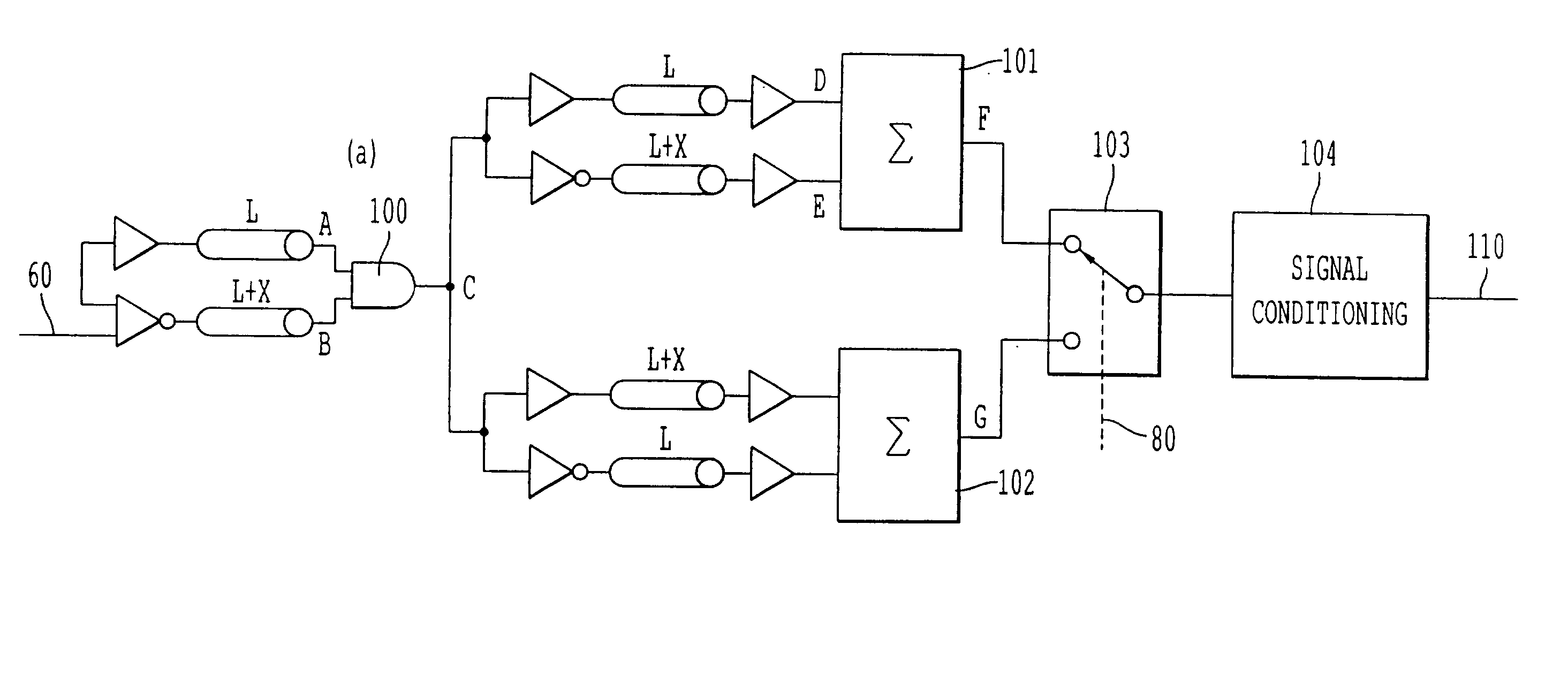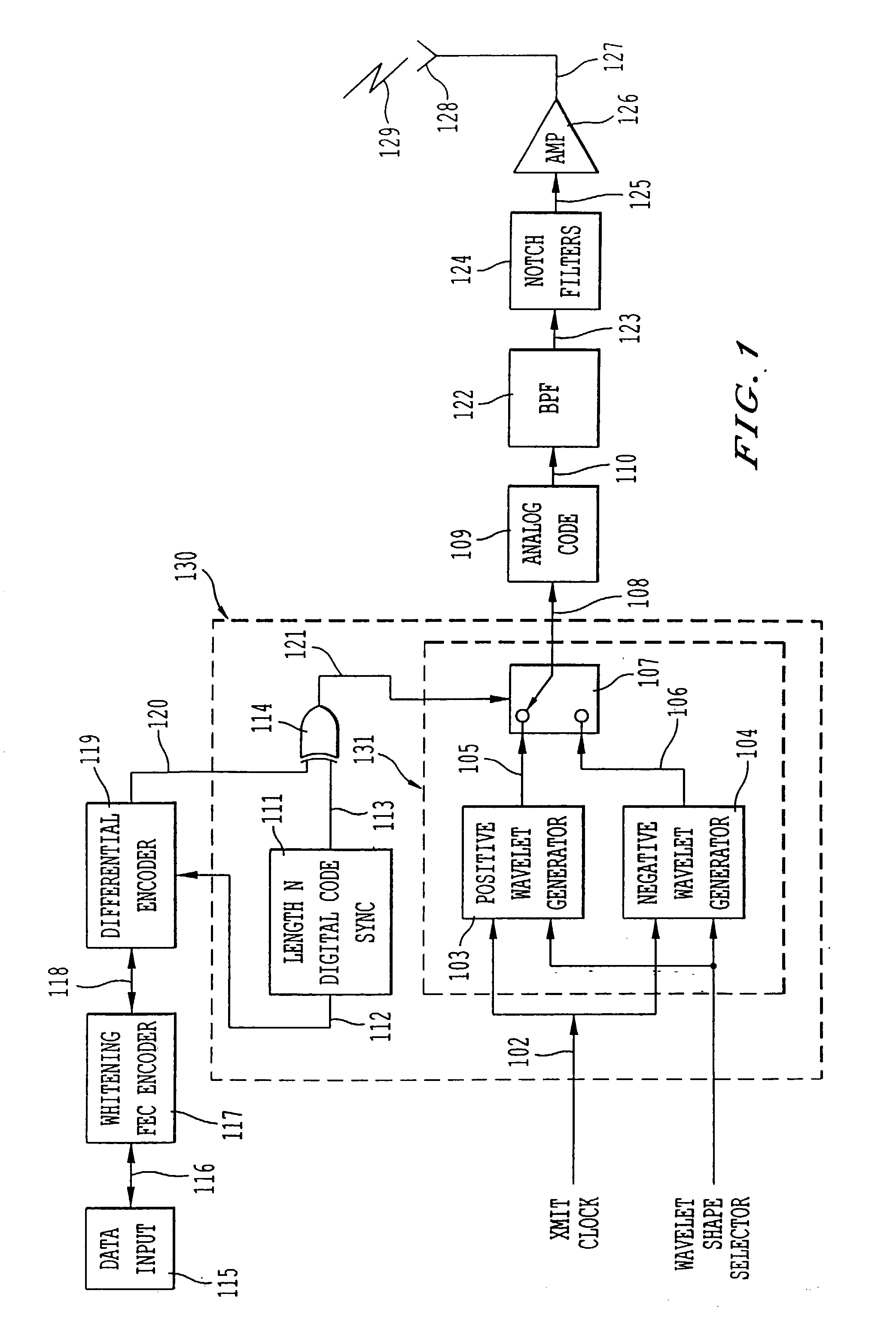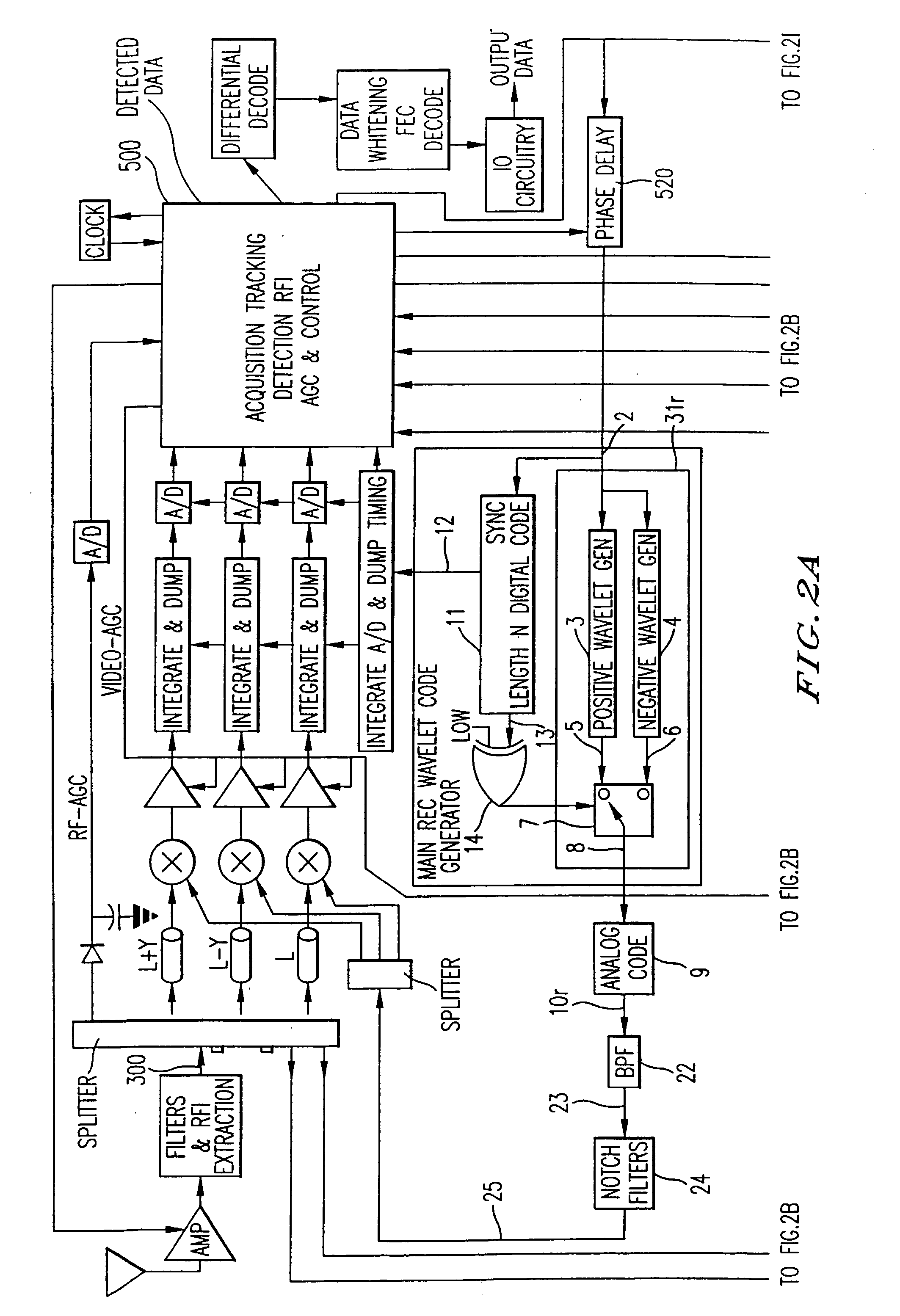Ultra wide bandwidth spread-spectrum communications system
- Summary
- Abstract
- Description
- Claims
- Application Information
AI Technical Summary
Benefits of technology
Problems solved by technology
Method used
Image
Examples
Embodiment Construction
[0089] In the detailed descriptions we describe the operation of the UWB short pulse transmitter and receiver. Both cases begin with expressions for the key waveforms generated, and then relate their elements to the circuits.
[0090] Transmitter
[0091] A block diagram of the transmitter is shown in FIG. 1. Its goal is to generate the waveform of equation (11), which was 11 x ( t ) = d ( t ) * h ( t ) * s ( t ) = ( k = 0 N d - 1 d k ( t - kT c ) ) * ( n = 0N c - 1 h n ( t - T n ) ) * s ( t ) . = k = 0N d - 1 n = 0N c - 1 d kh n s ( t - T n - kT c ) ( 13 )
[0092] In this formulation, the transmit waveform is defined as the convolution of the data stream d(t) with the code h(t), and the underlying pulse s(t).
[0093] Data Stream
[0094] The transmitter receives data from data input 115. Mathematically, the binary data d(t) are represented by a stream of equispaced impulses, one per data bit, indexed by k. FIG. 16 is an example for the data d.sub.k=[1, 0, 1, 1, 0, 1, 0], as a stream of positive...
PUM
 Login to View More
Login to View More Abstract
Description
Claims
Application Information
 Login to View More
Login to View More - R&D
- Intellectual Property
- Life Sciences
- Materials
- Tech Scout
- Unparalleled Data Quality
- Higher Quality Content
- 60% Fewer Hallucinations
Browse by: Latest US Patents, China's latest patents, Technical Efficacy Thesaurus, Application Domain, Technology Topic, Popular Technical Reports.
© 2025 PatSnap. All rights reserved.Legal|Privacy policy|Modern Slavery Act Transparency Statement|Sitemap|About US| Contact US: help@patsnap.com



